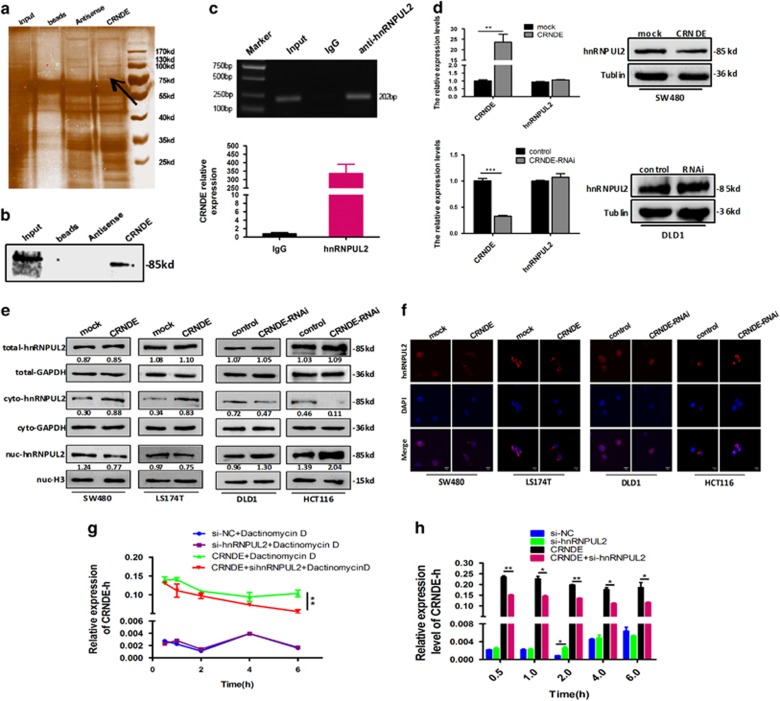Figure 5.
CRNDE interacts with hnRNPUL2 protein and directs its localization. (a) RNA pull-down assays were used to identify proteins associated with CRNDE. Biotinylated CRNDE and antisense RNA were incubated with cell extracts, and the associated proteins were resolved by SDS-PAGE. Specific bands were excised and submitted for mass spectrometry, and hnRNPUL2 was identified. (b) Western blotting analysis of the specific interaction of hnRNPUL2 with CRNDE. (c) RIP experiments were performed in DLD1 cells using an hnRNPUL2 antibody or nonspecific IgG, and specific primers were used to detect CRNDE. RIP enrichment was determined as the amount of RNA associated with hnRNPUL2 or IgG relative to the input control. (d) CRNDE did not induce the expression level of hnRNPUL2 in SW480 and DLD1 CRC cells. CRNDE-induced subcellular relocalization of hnRNPUL2 protein was identified by western blot analysis (e) and immunofluorescence microscopy analysis (f). Scale bars=10 μm. Increased hnRNPUL2 was seen in the cytoplasm following CRNDE overexpression in SW480 and LS174T cells. Conversely, the downregulation of CRNDE could reduce the cytoplasmic levels of hnRNPUL2 expression in DLD1 and HCT116 cells. (g) Cytoplasmic hnRNPUL2-stabilized CRNDE RNA. Cells were transfected with hnRNPUL2-siRNA or control siRNA for 48 h and were then exposed to actinomycin D (1 μg/ml), and total RNA was isolated at the indicated times and subjected to real-time RT-PCR to assess the half-life of CRNDE RNA. (h) Cytoplasmic hnRNPUL2 induced CRNDE RNA levels in CRC cells

